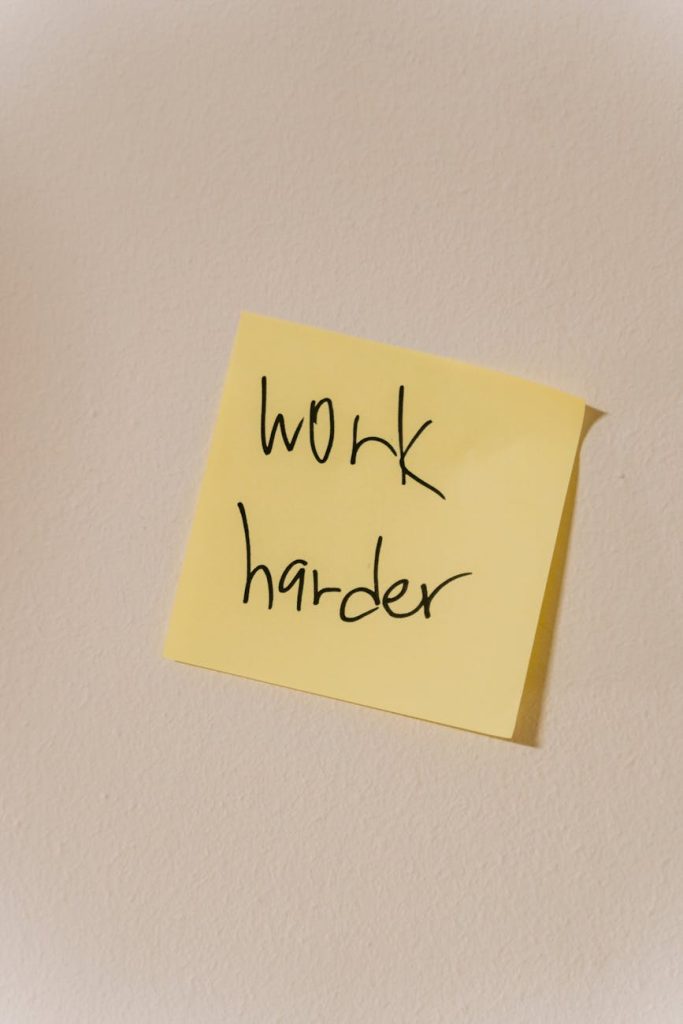Setting the Stage for Success
Getting your career on track is like planning a road trip; you need a map and a plan. Knowing why career planning matters and who can truly benefit from it is your first pit stop on this journey.
Importance of Career Development Planning
Think of career development planning as your trusty GPS. It directs you toward your dream job by pinpointing goals, spotting skills you might need, and plotting out the best route to get there. When you’ve got a plan in your back pocket, it helps you stay on course, keeps you motivated, and ready for the twists and turns of the job market.
Who Can Benefit from a Career Development Plan
A good career plan isn’t just for a certain type of person. It’s approachable and useful for all kinds of folks wanting to grow and find satisfaction in their work life. Here’s who might really cash in on having a plan:
| Audience | Description |
|---|---|
| Students | The young folks can set learning and career targets early, helping them glide into their future jobs with ease. |
| Entry-Level Job Seekers | Fresh into the job market? These plans can help you figure out your career ladder and what skills you’ll need to climb it. |
| Career Changers | If you’re thinking about switching lanes, a career plan helps link your existing skills to new ventures without the bumps. |
Want the full scoop on how to master the career planning game? Check out our article on career planning process steps. With a bit of strategic planning, you can unlock your potential, refine your talents, and create a career story that’s satisfying and uniquely yours.
Assessing Where You Stand
Before jumping into a career development plan, it’s a good idea to figure out exactly where you are right now. This involves a bit of thinking about yourself and doing some evaluations to understand your skills, goals, and what you might want to improve.
A Good Look Inward
Taking a moment to reflect on yourself is like hitting pause on life for a sec. It’s a chance to weigh up what’s important to you, what you love doing, and where you’re headed in your career. This involves thinking about your strengths and those dusty corners we all have — the things that aren’t your strong suit. Looking back at your experiences, wins, slip-ups, and what you’ve learned along the way can give you some serious insights for plotting your career path.
Apart from self-reflection, it’s pretty smart to get some outside feedback, maybe from folks like coworkers, mentors, or those annual evaluations. Other people’s input can help fill in the gaps you might not see, showing where you shine and where there’s room for a bit of polish. Looking at your skills, knowledge, and what you’re really good at — even objectively — can point out any areas that could use some extra love in your career plans.
Finding What You’re Good and Not-So-Good At
After sizing yourself up and picking up pointers from others, you should pinpoint what you rock at and where you could do a bit better. Strengths are those abilities and traits that make you a standout in your trade. Using these strengths wisely can help you climb the career ladder you’ve always dreamed about.
On the flip side, looking at where you might need some growth means admitting to any skills that could use a bit more work or polish. Maybe you’re eyeing better tech skills, getting better at talking to people, or beefing up on what’s happening in your field. Recognizing these areas gives you a chance to tweak your career plan to tackle them and keep pushing forward.
| Strengths | Areas for Growth |
|---|---|
| Chatting like a pro | Getting better at managing projects |
| Solving problems like a detective | Boosting leadership mojo |
| Mastering number-crunching | Getting more comfy on stage |
By doing a solid evaluation of where you’re at and pegging your strengths along with your growth spots, you’re setting up a rock-solid base for a career development plan that totally clicks with what you aim to achieve. This process helps map out a path towards growth and satisfaction as you move along in your work life.
Building Your Career Development Plan
Starting on creating your career development plan? Get ready to sketch out your goals and jot down some solid moves to climb those professional ladders with style and purpose.
Setting Clear Goals
Walking without a destination in mind? That’s not our game plan here. Pin down what you want with your career by setting clear goals. Start by digging deep into what you really want long-term, then break ‘em down into smaller chunks that are easier to tackle. Think SMART: Specific, Measurable, Achievable, Relevant, and Time-bound goals turn dreams into to-dos.
| Goal Zone | Dream it, Do it |
|---|---|
| Professional Updo | Snag a certification in a specialty by next year. |
| Climbing the Ladder | Land a leader spot in three years. |
| Personal Boost | Master those communication vibes through public speaking by year’s end. |
Match your goals with what sparks joy (truly!)—your interests, talents, and values. Have a heart-to-heart with yourself now and then to make sure your goals still fit like a glove as your career takes wild turns.
Check out the career planning goals examples for some spicy inspo!
Mapping Actionable Steps
Alright, goals are set. What’s next? Bust ‘em into steps that you can act on. Get specific and list what needs doing to tick off those goals. Maybe even set a timeline to keep you on your toes.
| Dream Big | Baby Steps |
|---|---|
| Fancy Certification | 1. Scout certification programs. 2. Sign up for a course. 3. Carve out weekly study time. |
| Leadership Ambitions | 1. Find mentors rocking leadership. 2. Sketch a leadership growth plan. 3. Jump into leadership training. |
| Communication Upgrade | 1. Step into speaking workshops. 2. Regularly flex those presentation muscles. 3. Ask the crew for feedback. |
Breaking down goals into these action steps is like laying a path for success, one notch at a time. Keep at it; persistence is your best buddy on this adventure.
Get more grooves on career moves by checking out these reads: effective career planning tips and strategic career development planning.
Implementing Your Plan
You’re ready to make your career dreams come true, and this phase is where the rubber meets the road. This part is all about getting some mentors on your side and beefing up your skills and connections—pretty much your career’s secret sauce.
Seeking Mentorship and Guidance
Getting a mentor is like hitting the jackpot for career growth. These folks have been around the block and can dish out advice from their own playbooks. Whether you’re fresh outta school or doing a career 360, a mentor can be your career game-changer.
Why Bother with a Mentor?
- Get the inside scoop on your industry
- Make smart career moves with guidance
- Grow your list of contacts
- Get honest feedback that helps you level up
Pick someone who gets you and knows what counts in your career world. They might be that seasoned coworker, someone in your dream job, or an old professor. A good mentor-mentee bond helps you grow and, let’s just say, opens up a whole lot of doors.
Learn more about finding your career Yoda in our article on career planning and skill development.
Networking and Skill Building
If you wanna move up, you’ve gotta know some folks and show off your skills. Networking isn’t just some corporate buzzword; it’s your gateway to opportunities, fresh ideas, and making your name known. And when it comes to skills? Keep sharpening them ’til they shine like a diamond.
Tips for Networking:
- Hit up industry parties and conferences
- Work your LinkedIn like a pro
- Set up casual chats with industry folks
- Join clubs or groups that matter in your line of work
But don’t forget about skill building. It’s like muscle memory—keep flexing those tech and people skills! Dive into workshops, classes, grab those certifications, and keep ahead of the game.
For a deep dive into making the right connections and fine-tuning your skills, check out our article on career planning techniques.
By throwing yourself into mentorship, networking, and skills, you’ll lay down a rock-solid professional base. Stay curious, work hard, and you’ll be cruising toward your career goals before you know it. It’s your career—own it and make it awesome!
Monitoring and Adjusting
Just like forgetting to take out the trash, laying out your career plan is only the beginning—certainly not the big finale. Keep an eagle eye on your career progress and be ready to twist and turn when necessary. This section shows you how to treat your career like a houseplant—it needs regular attention and the occasional pruning to thrive.
Tracking Progress
Keeping tabs on your progress isn’t just a less fun version of watching paint dry. It actually helps you steer your career the right way. Whether it’s jotting down mini-victories, scribbling in a journal, or leaning into new tech, all these can help. They let you see what’s working and what’s not—giving you the inside scoop on what’s next in this big game of LIFE.
| Method | Frequency | Why Bother? |
|---|---|---|
| Milestones | Monthly | Slice those giant goals into bite-sized nuggets. |
| Achievement Journal | Weekly | Look back to leap forward. |
| Tracking Tools | Real-time | Use apps ‘cause who doesn’t love graphs? |
Making Necessary Adjustments
Flexibility isn’t just for gymnasts—it’s crucial for career planning too. As you track your path, new chances or roadblocks might pop up. Tweak your itinerary as needed, like revising goals, reshuffling the ‘learn new skill’ deck, or asking for a hand. Staying nimble keeps you steering toward success.
| Situation | Adjustment | What’s the Deal? |
|---|---|---|
| New Career Path | Update Goals | Tune in to what you really want now. |
| Found a Skill Gap | Tweak Learning Plan | Tackle those weak spots head-on. |
| Changed Office Scene | Polish Networking Game | Make pals who fit this new scene. |
If you keep assessing your path and aren’t afraid to take a different route if you need to, your career flight path stays tight and in tune with your dreams. Want to get more strategic with that career leap? Head over to our piece on strategic career development planning. There’s always room for a little more finesse, right?
Long-Term Growth and Sustainability
So you’re diving into your career journey, huh? Let’s talk about keeping your ship sailing smoothly and how to make sure it doesn’t spring a bunch of leaks along the way. We’re gonna chat about growing big and staying strong in your work life. Keeping up with learning stuff and being ready to change direction when things go sideways are key here.
Continual Learning and Development
Remember school? Yeah, life isn’t done teaching you stuff. In the ever-changing job scene we face today, sticking to a “never stop learning” mindset is your secret weapon. Picking up new skills not only sharpens your toolkit but also gets you ready to roll with the punches when surprises pop up.
Set aside some ‘me time’ to take online classes or check out workshops or get snoozy at industry seminars. This kind of professional homework not only makes you worth your weight in gold but also shows you’re all about growth and rolling with the punches.
A curious mind and a taste for new tech can open more doors than you ever thought possible. Keep your finger on the pulse of what’s hot in your field, and you’ll stand tall as the go-to expert, ready to handle whatever’s coming down the pike.
Pivoting and Adapting to Changes in the Work Environment
In the whirlwind of today’s workspace, being able to change course and adapt is a standout talent that can put you ahead of the pack. Whether you’re facing new tech, a shake-up in your industry, or company reshuffles, being flexible keeps you in the game for the long haul.
To nail the art of pivoting, ditch the resistance to change and view it as a chance to learn and create. Stay connected to what’s new in your world and loop in the know-how and skills you’ll need to ace the game.
Schmooze with industry pals, find yourself a mentor, and throw yourself into team projects to get the scoop on transitioning smoothly. By being quick on your feet and open to change, you make things happen rather than let things happen to you.
Keep your eyes on the prize of long-term growth and career staying power by making sure you’re wobbly like jelly but standing strong like a rock when it counts. Morph stumbling blocks into stepping stones and change gears smartly when you need to. For more pearls of wisdom on mapping out your career path, don’t forget to check out our article on strategic career development planning.




